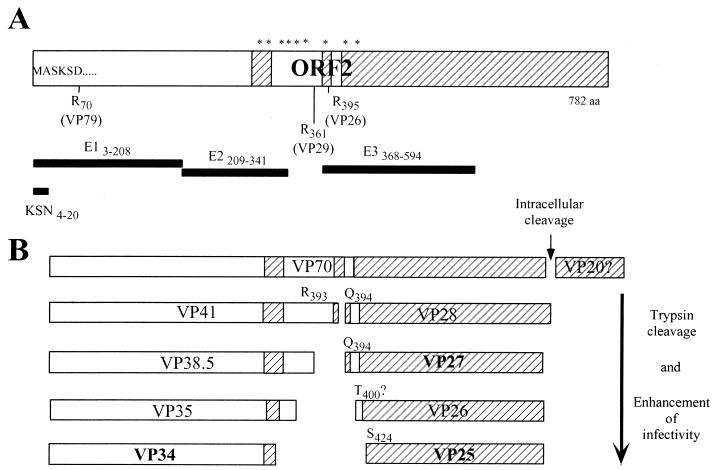FIG. 5.
(A) Diagram of the ORF2 of HAstV and recombinant astrovirus proteins. ORF2 is represented as a box, and the recombinant proteins and the KSN peptide are represented as thick black lines. The diagram is to scale, and the relative positions of the astrovirus Yuc8 recombinant proteins E1, E2, and E3 and the peptide KSN is shown (subscripts indicate the amino acid residues included in each protein). The hypervariable regions found among human astrovirus serotypes (16) are shown as striped boxes. The arginine (R) residues identified by Bass (2) and Sanchez-Fauquier (20) as cleavage sites in the capsid polyprotein of HAstV-1 and HAstV-2 and the protein products proposed (in parentheses) to be generated by these cleavages are indicated. Asterisks represent susceptible trypsin sites conserved among astroviruses belonging to different serotypes, which could be cleaved to yield the VP41- and VP28-derived polypeptides. (B) Proposed trypsin processing pathway for the ORF2 polyprotein of astrovirus Yuc8. Boxes represent the products observed during virus activation; the final products, present in fully activated particles, are indicated in boldface type. The N-terminal amino acid residue of the VP28-derived products is shown. See details in the text.

